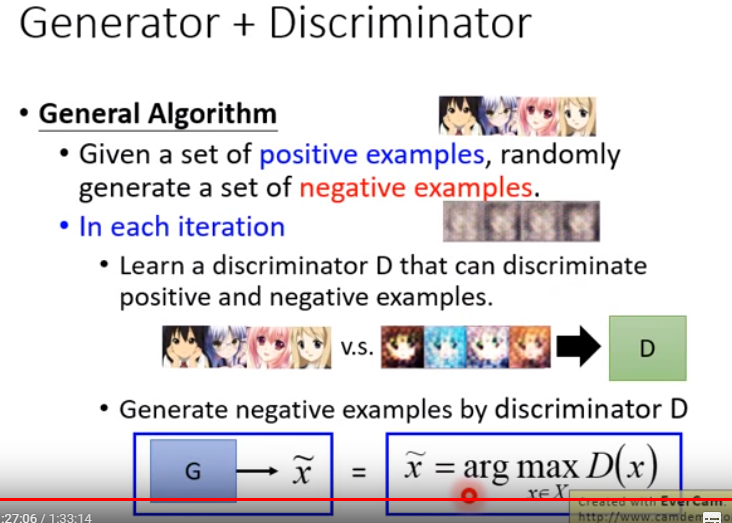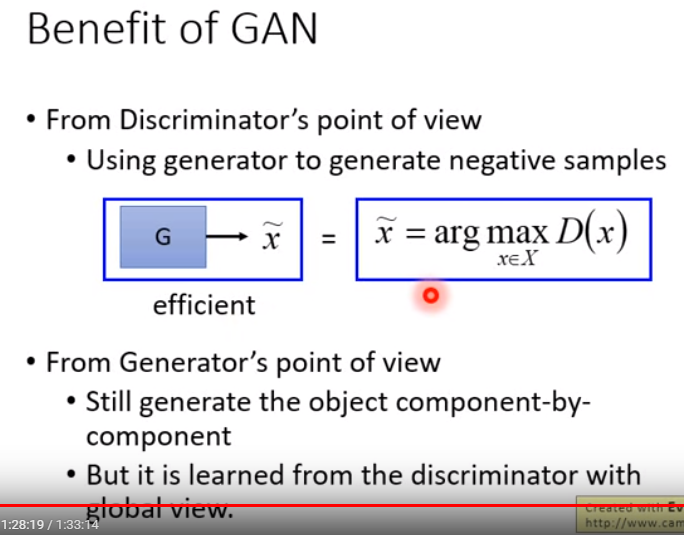GAN Lecture 1
Yann LeCun: Adversarial training is the coolest thing since sliced bread.
Outline
- Basic Idea of GAN
- GAN as Structured Learning
- Can Generator Learn by Itself?
- Can Discriminator Generate?
- A Little Bit Theory
Basic Idea of GAN
Generation
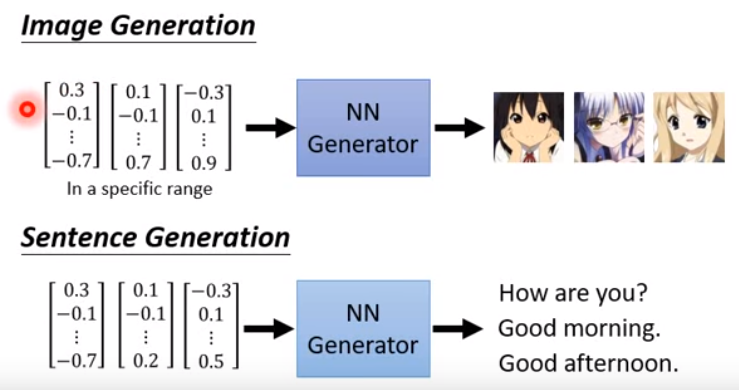
Generation: it is a neural network or a function.

input vector: each dimension of input vector represents some characterstics.
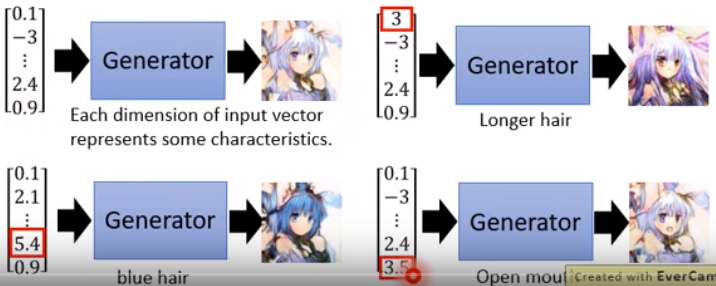
Discriminator
Discriminator: it is a neural network or a function.

output scalar: large value means real, smaller value means fake.

GAN Algorithm
Initialize generator and discriminator
-
In each training iteration:
Step 1: fix generator G, and update discriminator D
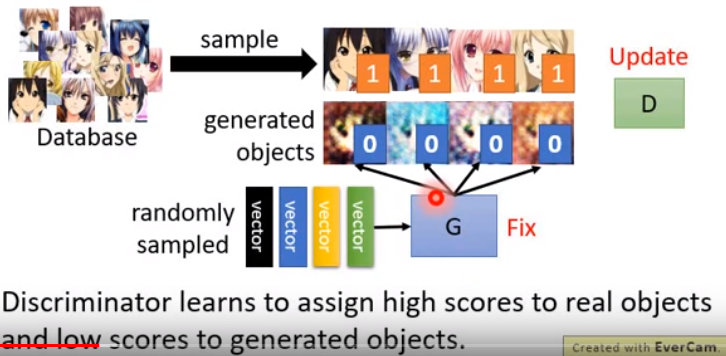
Step 2: fix discriminator D, and update generator G
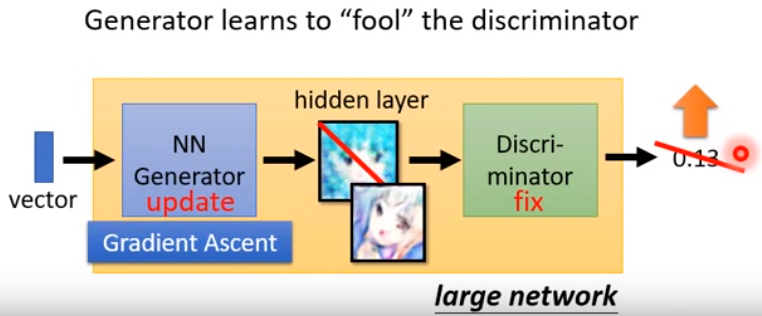
Initialize for D and
for G
-
In each training iteration:
- Sample m examples
from database
- Sample m noise samples
from a distrubution
- Obtaining generated data
- Update discriminator parameters
to maximize
Learning D
- Sample m noise samples
from a distribution
- Update generator parameters
to maxmize
Learning G
- Sample m examples
GAN as Structured Learning
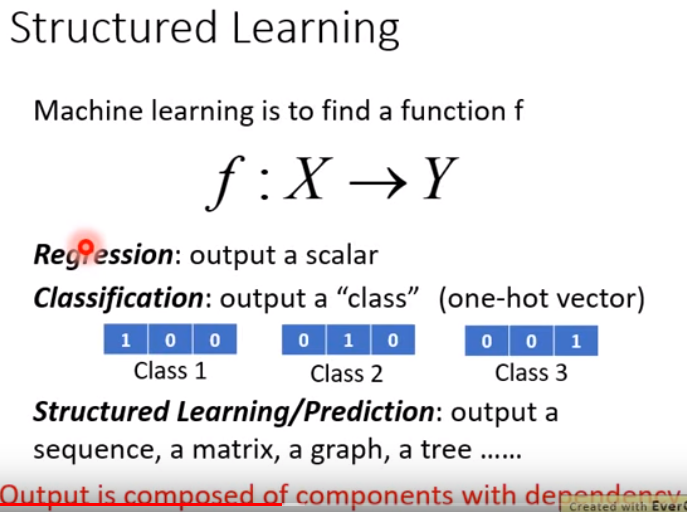
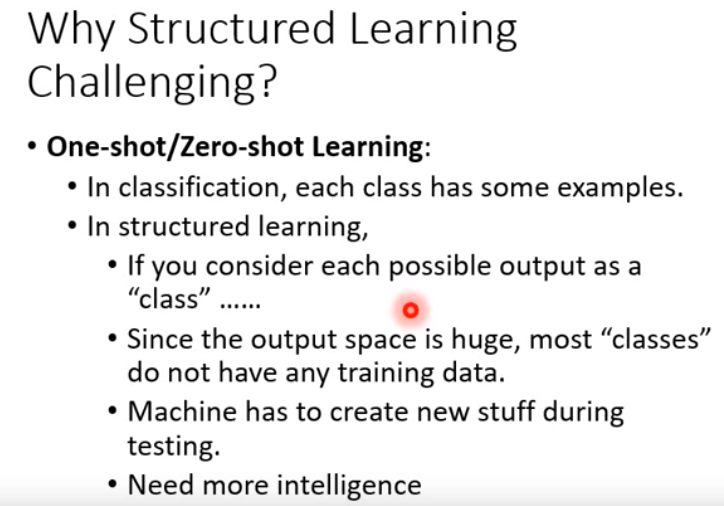
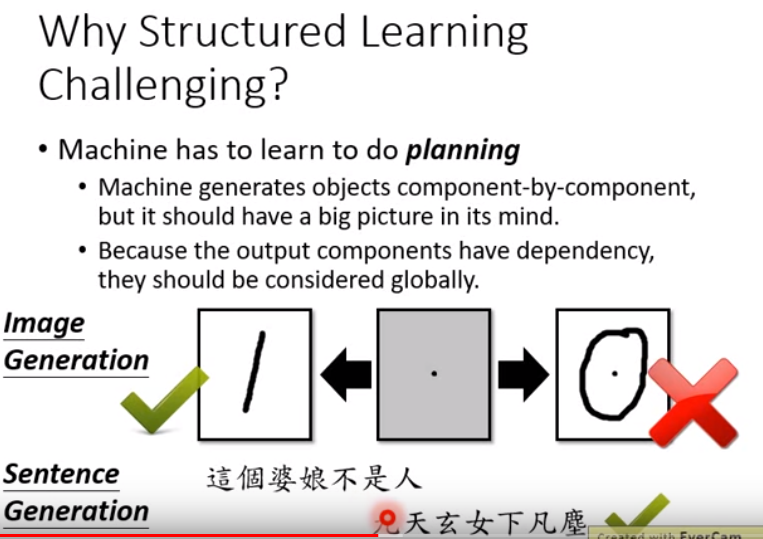
Structured Learning Approach
-
Bottom Up: Learn to generate the object at the component level
缺乏大局观
Top Down: Evaluating the whole object, and find the best one
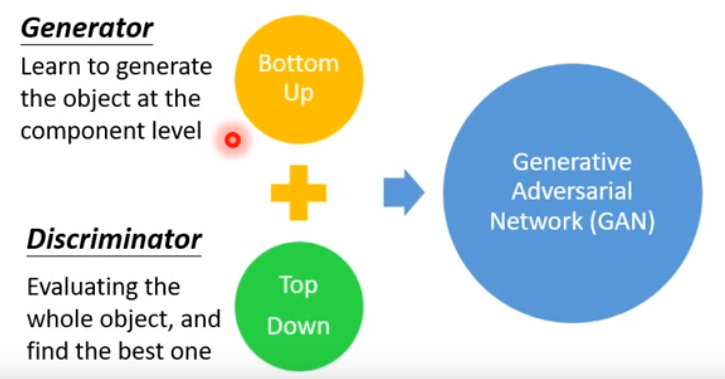
Can Generator Learn by Itself?
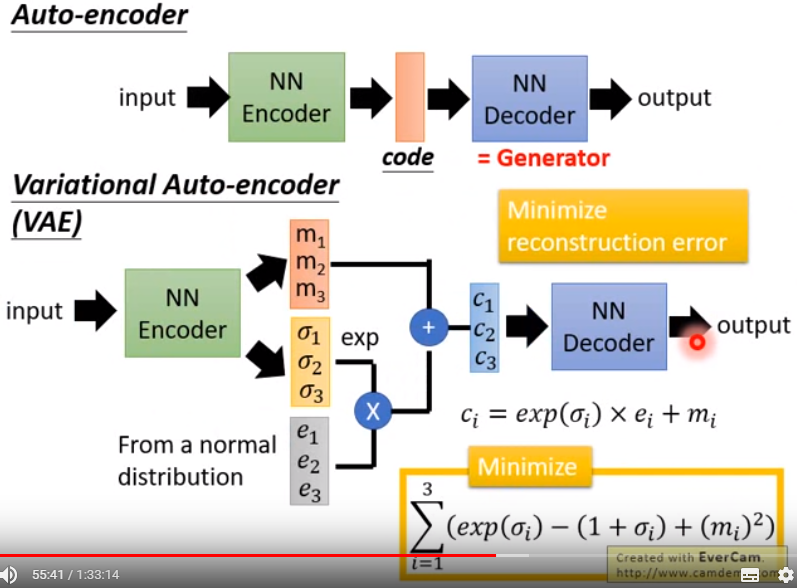
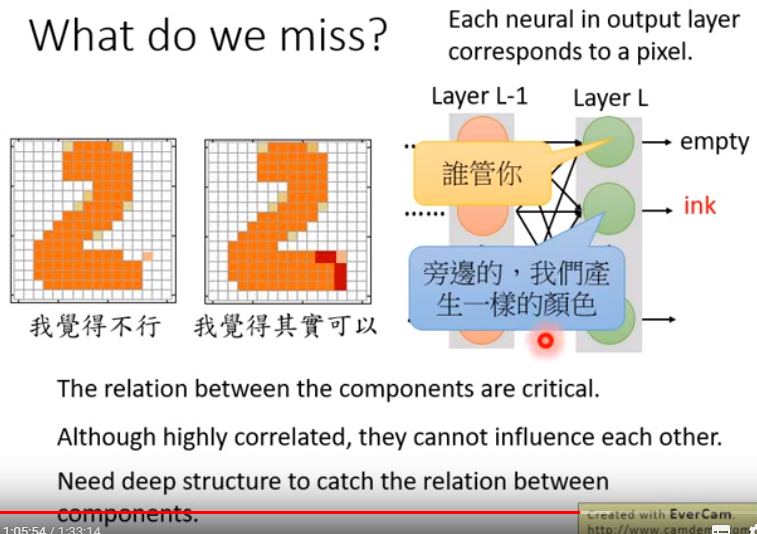
若使用Auto-Encoder技术作为Generator,那么需要更深的网络结构。
Can Discriminator Generate?
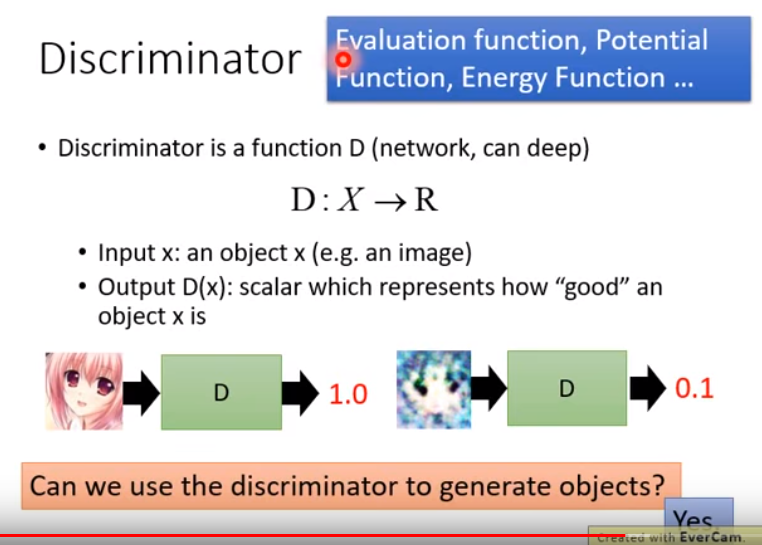
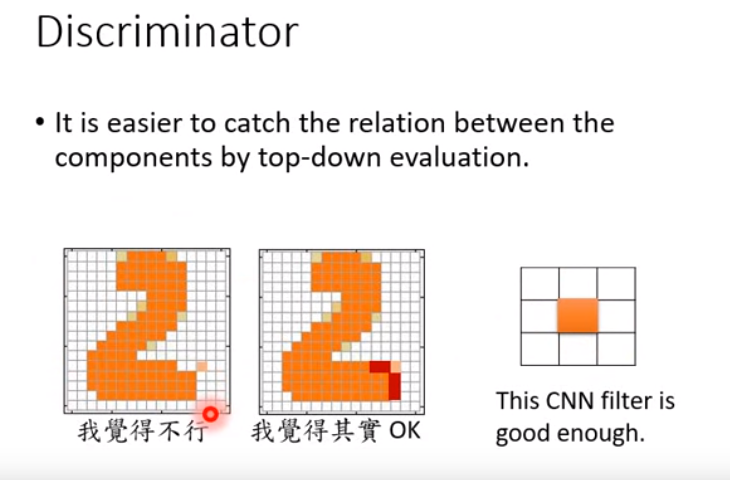
Discriminator -- Training
- General Algorithm
- Given a set of positive example, randomly generate a set of negative examples.
- In each iteration
- Learn a discriminator D that can discriminate positive and negative examples.
- Generate negative examples by discriminator D:
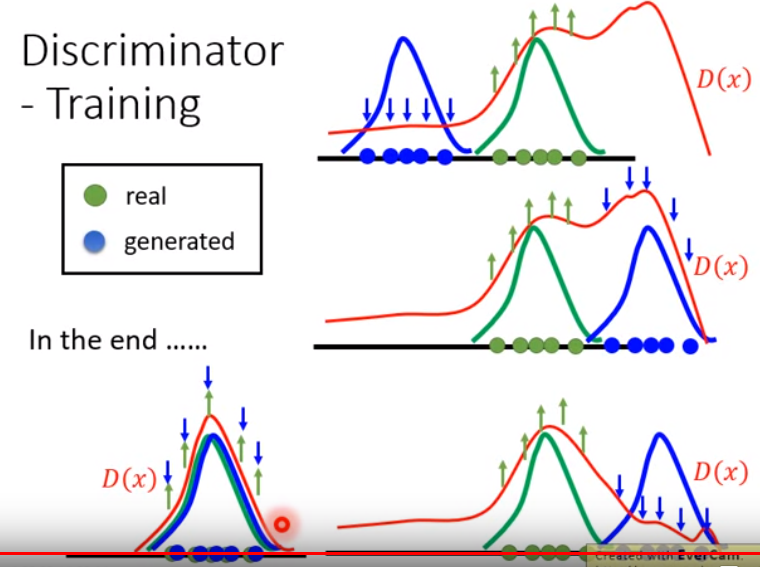
Generator v.s. Discriminator
- Generator
- Pros:
- Easy to generate even with deep model.
- Cons:
- Imitate the appearance.
- Hard to learn the correlation between components.
- Pros:
- Discriminator
- Pros:
- Considering the big picture.
- Cons:
- Generation is not always feasible, especially when your model is deep.
- How to do negative sampling?
- Pros:
Discriminator + Generator -- Training
- General Algorithm
- Given a set of positive example, randomly generate a set of negative examples.
- In each iteration
- Learn a discriminator D that can discriminate positive and negative examples.
- Generate negative examples by discriminator D:
